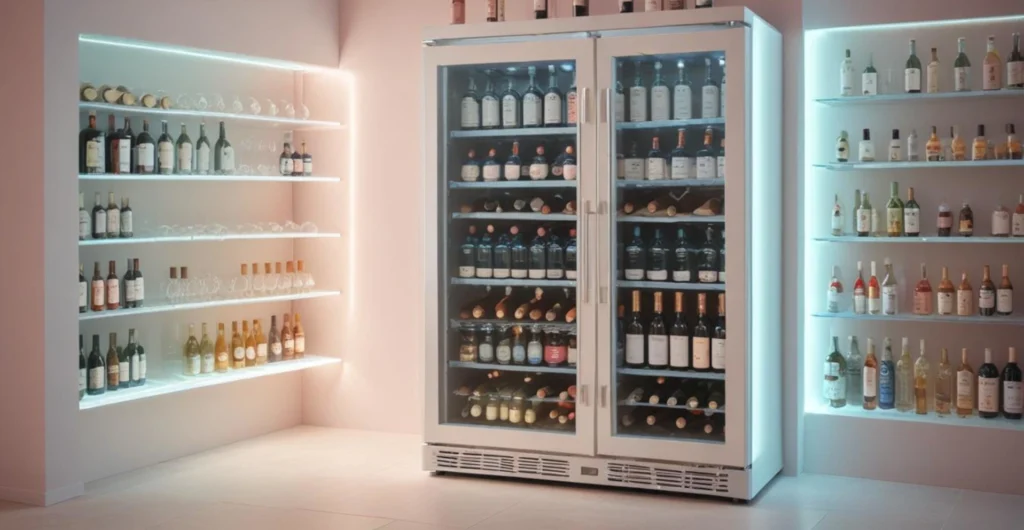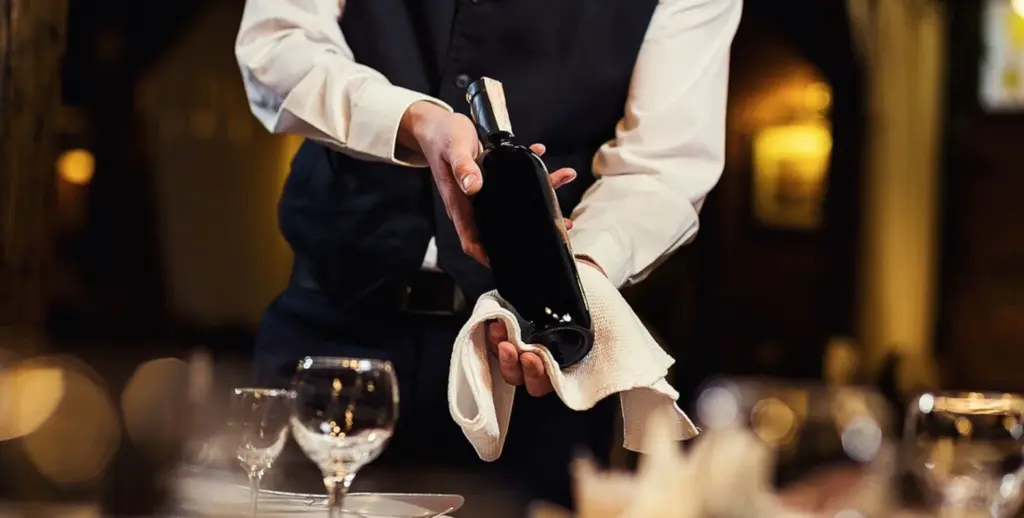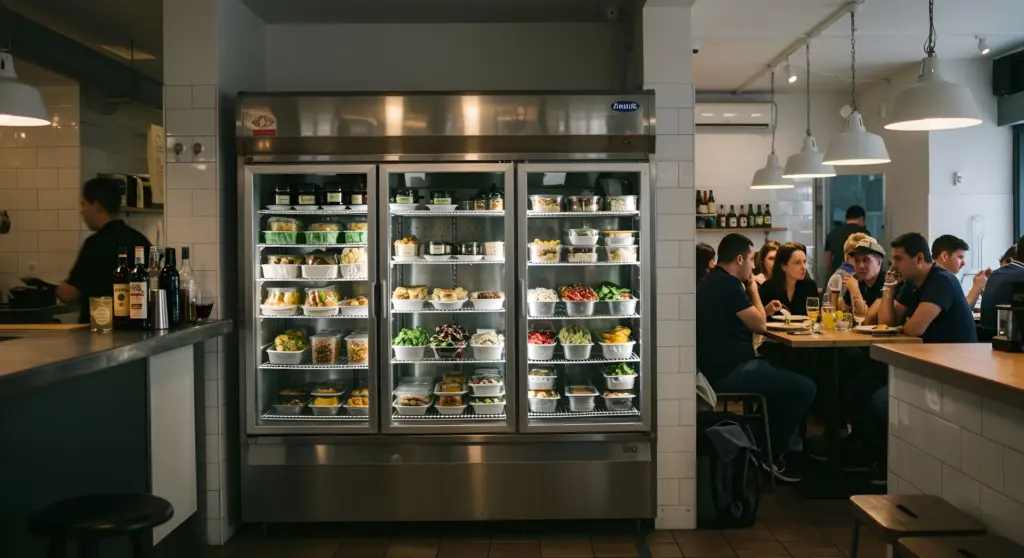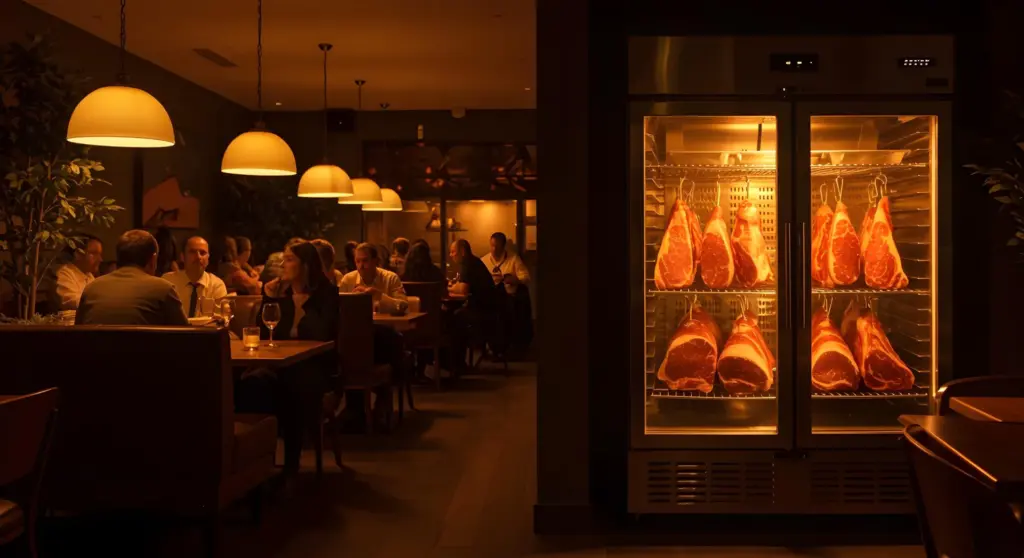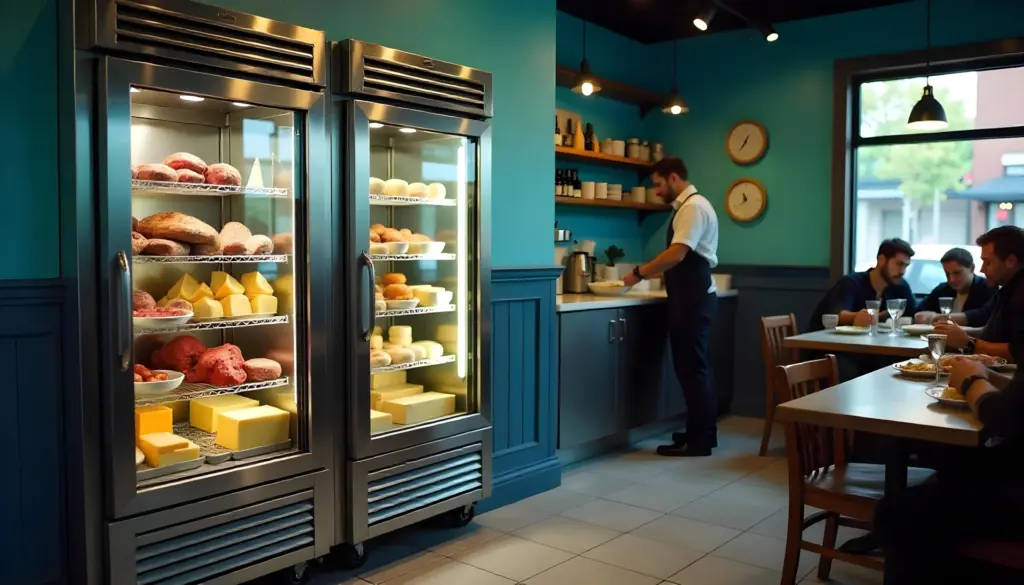The retail sector, especially the food and beverage supermarkets and gourmet shopsis rapidly evolving to adapt to an increasingly demanding, aware and connected consumer. Undoubtedly, these trends, which will dominate supermarkets and gourmet shops in 2025, are shaped by factors such as the sustainabilitydigitalisation, changing purchasing habits and the demand for personalised experiences.
In this article, we will give some insights into how these transformations are impacting the design and operations of supermarkets and gourmet shops and how they are impacting the design and operations of supermarkets and gourmet shops. Corecowith its professional and innovative refrigeration solutions, can help shops to be at the forefront of this process of change.
1. The transformation of supermarkets and gourmet shops in 2025
In an increasingly competitive market, supermarkets and gourmet shops are moving away from being simply places to buy products. They are now looking to offer something more: a complete experience that connects with their customers' values and lifestyles.
To illustrate how these trends are impacting the design and operation of gourmet shops, we will detail case studies that could be implemented or are already being used in gourmet shops.
1.1 Digitisation: From mobile applications to automation technologies
In a gourmet shop, digitalisation can manifest itself in various ways that not only optimise shopping for customers, but also improve the operational efficiency of the business.
Practical example:
Imagine a gourmet shop that offers a personalised mobile app. Upon entering, customers can scan a QR code that synchronises their user profile with the shop's system. From that moment on, the experience is transformed:
- Personalised recommendations: The application suggests products based on previous purchases, such as a specific wine to match the artisan cheese they have purchased on previous visits.
- Time optimisation: The app allows you to locate products within the shop, indicating exactly which shelf they are on.
- Checkout automation: Customers can add products to their virtual cart by scanning the barcode directly from their phone. At checkout, the automatic payment system detects the products purchased and takes the payment without the need to go through a traditional checkout.
On the other hand, automation technologies are also integrated into internal shop operations:
- Inventory management: IoT sensors in refrigerated displays allow real-time monitoring of the temperature and condition of fresh produce, alerting staff in case of incidents or products close to expiry.
- Automated ordering: The digital system is linked to suppliers and orders automatically when certain products reach minimum stock levels.
2. The rise of sustainability: more environmentally-friendly solutions
In a gourmet shop, customers are increasingly looking for sustainable choices, both in the products they consume and in the way the shop operates.
Practical example:
A gourmet shop decides to redesign its operations to align with sustainability values:
- Ecological refrigeration: The refrigerated displays use natural refrigerants with low environmental impact, complying with F-Gas 2024 regulations. In addition, these units are highly energy efficient, reducing the shop's electricity consumption and carbon footprint.
- Sustainable products: The shop highlights brands that use biodegradable packaging, sell products in bulk or promote the circular economy. For example, the charcuterie area offers sausages from local suppliers that use responsible production processes.
- Waste reduction: Fresh food that is not sold in time, such as fruit or vegetables, is processed in an area of the shop that produces preserves, soups or natural juices, which are available for sale in the Grab & Go.
In addition, the shop educates its customers about these initiatives through interactive signage, showing the positive impact their purchase has on the environment. For example, it highlights how much energy is saved by using Coreco displays with efficient technology.
3. The growing demand for practical formats: Grab & Go Areas
The areas Grab & Go are designed to offer customers quick and convenient options, without sacrificing the quality and visual appeal of the products. This format is ideal for gourmet shops looking to adapt to the fast-paced lifestyles of modern consumers.
Practical example:
In a gourmet shop located in a busy urban area, an area is installed Grab & Go right at the entrance. This space includes:
- Refrigerated displays : Packed with fresh salads, artisan sandwiches, vegan wraps and ready-made desserts, all attractively presented and kept at optimum temperatures. See our section Coreco Grab & Go
- Healthy drinks section: A compact refrigerated display case holds vitamin drinks, natural smoothies and fruit-infused water bottles for health-conscious customers.
- Complementary hot food: Although it does not require refrigeration, the area includes a station with soups or ready meals that customers can take directly to work or eat at a small table area inside the shop.
This format not only satisfies the demand for practicality, but also boosts the impulse salesThe products are strategically placed to attract the attention of customers who are looking for speed without sacrificing gourmet quality.
4. Personalising the shopping experience: flexible and welcoming spaces
Personalisation is key to attracting and retaining customers in gourmet shops, and this is reflected in the flexible design of the spaces and the options available.
Practical example:
A gourmet shop redesigns its space to include areas that align with the interests of its customers:
- Health food zone: This area includes organic, gluten-free and vegan products, clearly labelled and arranged in a well-lit space. Refrigerated displays keep salads and protein shakes fresh.
- Catering area inside the shop: Instead of just offering take-away products, the shop sets up a small restaurant with cosy tables and a menu based on fresh ingredients available in the shop itself. Customers can enjoy an authentic gastronomic experience while getting to know the products they can then purchase. For example, a truffled pasta dish includes the truffles and handmade pasta that are on sale in the fresh food section.
- Customised events: The shop organises workshops and product tastings (wines, cheeses, oils), allowing customers to learn more about the products while enjoying a unique experience.
In addition, the areas of the shop are modular and flexibleThis allows the space to be adapted according to the season or the needs of the moment. For example, in summer, the cold drinks and fresh produce section is expanded, while in winter the focus is on ready meals and hot options.
What does Coreco propose?Coreco's refrigeration solutions allow for this flexibility thanks to their movable and modular equipment, which can be easily relocated to adapt to seasonal changes or product layout.
Innovation at the service of the gourmet experience
These examples show how supermarkets and gourmet shops can implement the 2025 retail trends, from digitalisation to personalisation, sustainability and convenient formats such as Grab & Go.
In this process, Coreco Gourmet is positioned as a strategic partner, offering refrigeration solutions that not only meet market requirements, but also enhance the customer experience and optimise shop operations.
In this context, professional refrigeration solutions become a key pillar for shops to implement these trends in an efficient and sustainable way.
2. The key trends that will dominate gourmet supermarkets in 2025
a) Sustainability at the core
Commitment to sustainability is not just a consumer expectation, but a necessity for supermarkets seeking to reduce costs and their environmental impact.
Some sustainable practices that will be key in 2025 include:
- The use of environmentally friendly refrigerants to reduce the carbon footprint.
- Equipment for high energy efficiency that minimise electricity consumption and contribute to the profitability of the business.
- The drive towards a circular economywhich promotes waste reduction and collaboration with local suppliers.
What does Coreco propose? The Coreco Gourmet refrigerated displays are designed with advanced technologies that combine energy efficiency and sustainability. In addition, the brand is aligned with the most stringent European regulations, such as the F-Gas 2024which regulates the use of refrigerant gases.
b) The rise of the Grab & Go format and flexibility in refrigeration
The shift towards faster lifestyles has boosted the popularity of the areas. Grab & Gowhere customers can buy fresh, healthy and ready-to-eat food. This format is establishing itself not only as a solution for busy customers, but also as a way to increase impulse sales.
In addition, modern gourmet or generalist shops are looking for flexible cooling solutions that can easily adapt to changes in product layout. For example:
- Small refrigerators with mobility placed close to complementary product areas, such as beverages next to salads or desserts next to ready meals.
- Cohesive fresh food zones combining products such as sandwiches, salads and vitamin drinks, designed for health-conscious customers.
For these cases we propose: The Coreco Gourmet 24/7 refrigerated displays are designed to offer maximum flexibility, allowing them to be moved according to the needs of the products. Their energy efficiency and modular design make them an ideal solution for shops looking to optimise their space.
c) Customer experience at the heart of design
By 2025, supermarkets will be designed to improve not only the traditional purchasebut also to deliver experiences that align with customer interests. This includes:
- The integration of restoration areas within supermarkets. More and more shops are adding full-service restaurants or cafés, becoming gastronomic meeting points beyond simple shopping venues.
- Designs that maximise comfort and aestheticsThe products are designed to be sustainable, from the layout of the products to the use of sustainable lighting and materials.
- Personalised experiences based on technology, such as interactive displays or applications that guide the customer through the shop.
How Coreco connects youCoreco's refrigerated displays are designed with efficient LED lighting and elegant finishes that not only preserve food to perfection, but also enhance the visual presentation to capture the customer's attention.
d) The rise of vitamin drinks and supplements
Supermarkets are increasingly devoting more and more space to products such as vitamin drinks, shakes and supplementsThe trend is driven by a growing interest in health and wellness. These products are often displayed alongside fresh foods such as salads and ready meals, creating cohesive areas that appeal to a health-conscious public.
Although these products do not always require specific refrigeration, having versatile and efficient refrigeration units ensures that they are stored at the ideal temperature, preserving their quality and presentation.
How Coreco connects you: The Coreco Gourmet refrigeration equipment are ideal for these product categories, as they allow the temperature to be set according to specific needs, maximising freshness and attractiveness.
e) Intelligent technologies in industrial refrigeration
Digitalisation is transforming industrial refrigeration, offering supermarkets and gourmet shops tools to manage their equipment more efficiently. By 2025, we will see an increase in:
- IoT sensors that monitor the condition of refrigeration equipment in real time, alerting you to any faults or temperature deviations.
- Predictive maintenanceThis reduces downtime and ensures that equipment is always operating at peak performance.
- Remote control systems that allow equipment to be monitored and adjusted from any location.
How Coreco connects youCoreco's equipment may include technologies for digital temperature and humidity controlas well as connectivity options that ensure optimal and efficient maintenance.
3. What do supermarkets and gourmet shops need to do to adapt to these trends?
To implement these trends effectively, supermarkets need solutions that are:
- FlexibleThe spaces and equipment must adapt quickly to changing consumer and product needs.
- Sustainable: Reducing environmental impact is not only an ethical imperative, but also a competitive advantage.
- Technologically advanced: Digitalisation and automation are essential to optimise processes and improve the customer experience.
Message CorecoCoreco Gourmet products are designed to meet these needs, offering refrigeration solutions that combine energy efficiency, flexibility and advanced technology.
4. Conclusion: The supermarkets of the future start today.
The trends that will dominate supermarkets and gourmet shops in 2025 are not a distant concept, but an evolving reality. From sustainability and design flexibility to the integration of dining experiences and advanced technologies, supermarkets have a unique opportunity to reinvent themselves.
At Coreco GourmetWe are committed to helping supermarkets and gourmet shops prepare for these trends coming our way in 2025. Our professional refrigeration solutions combine innovation, functional design and sustainabilityThe new system is designed to meet the demands of consumers and the operational needs of the sector.
"Want to discover how our refrigeration solutions can help you transform your gourmet shop into an efficient, modern and sustainable space? Visit Coreco Gourmet and start building the future of your business today".
